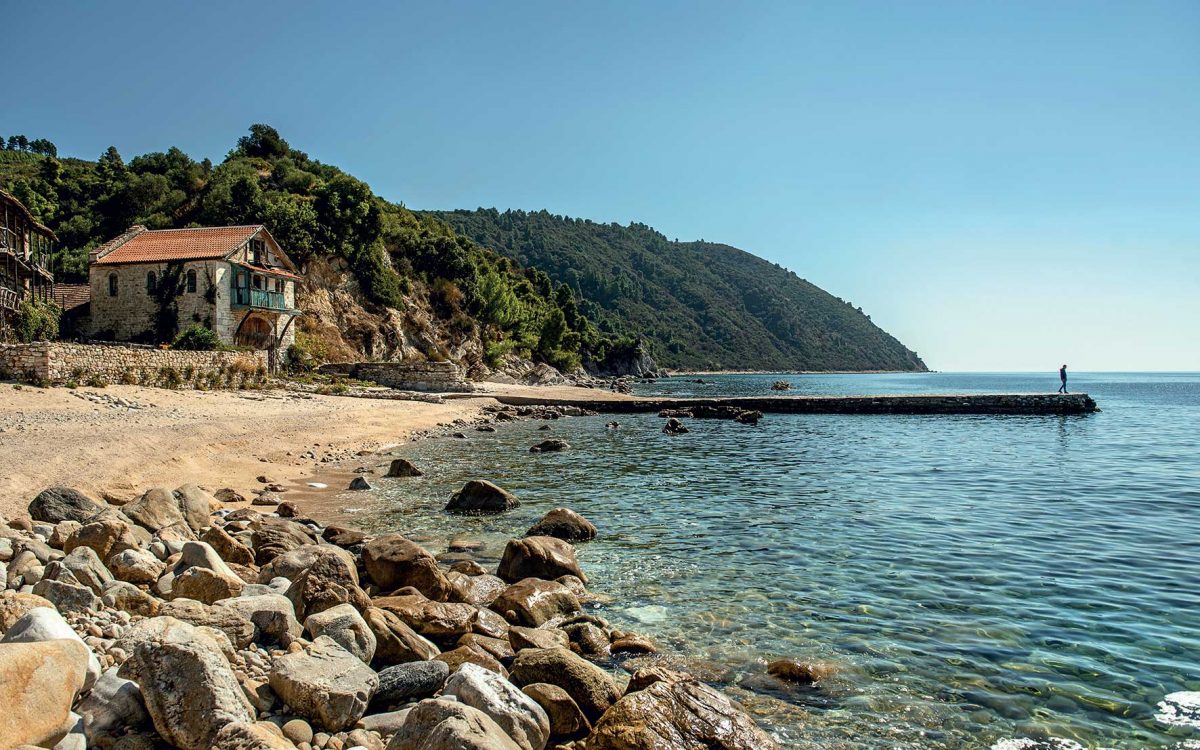“No entry.” This warning to women, above a massive stop sign, leaves no room for doubt. From here begins “a great place,” says our guide and archaeologist, Tasos Papadopoulos, who shows us the barbed wire stretching down to the sea and dividing Mt Athos, an autonomous polity of historic monasteries, from the rest of the world.
We’re on the Athos Peninsula, known as the third finger of Halkidiki, just two hours from Thessaloniki. Guided by Thessaloniki Walking Tours, our expedition begins with this unexpected “restriction.” We’re embarking on a fascinating route that takes in the long history of the monastic state, touches upon ancient Greece, and reveals a little-known story of WWII.
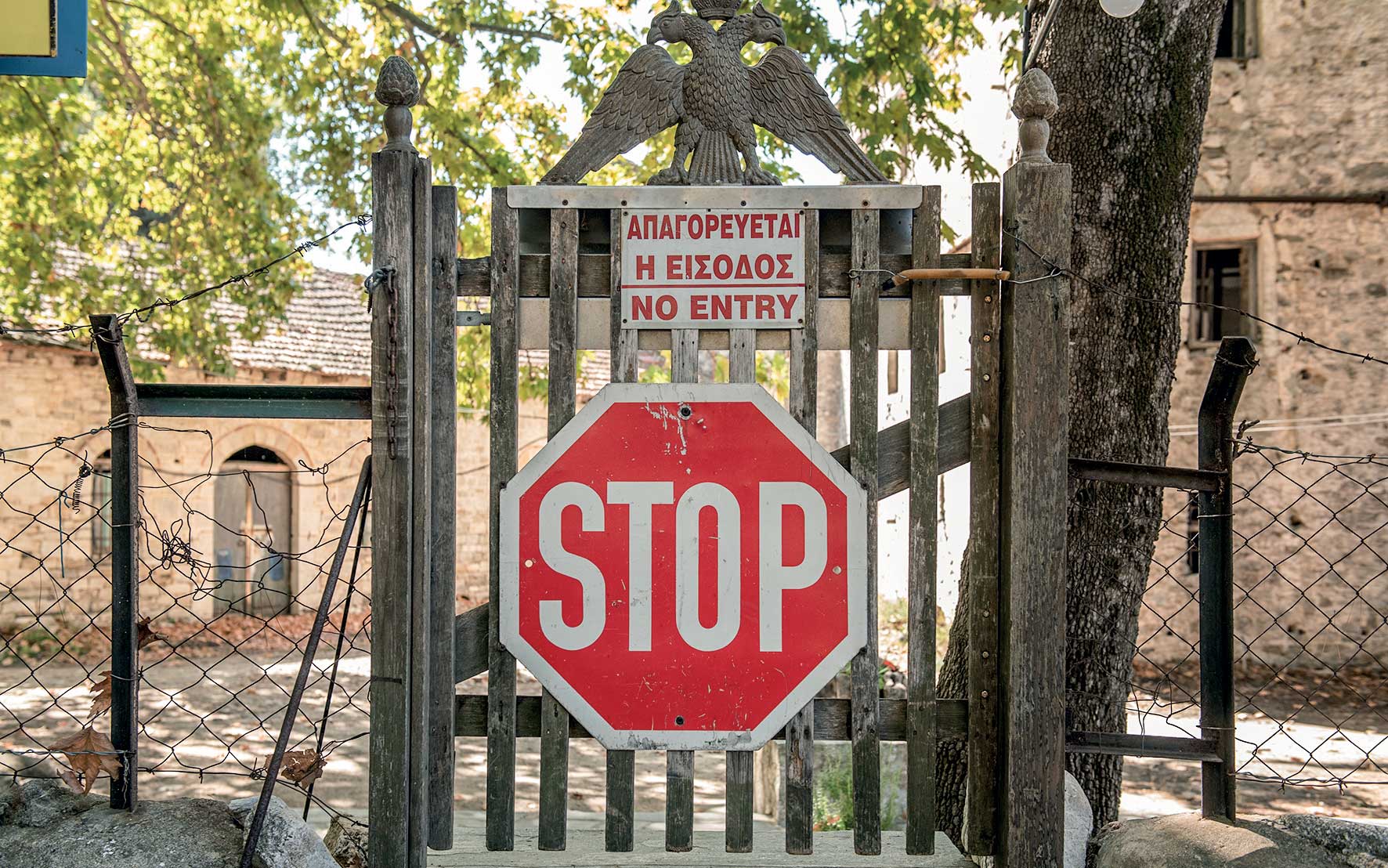
© Alexandros Avramidis
The “undisputed” ban
Across the border, we can see stone buildings that look like they belong to a different age. This is Agion Oros, or “The Holy Mountain” as it’s known in Greek. The history of this autonomous entity, with its 20 monasteries and 2,000 monks, began 11 centuries ago, when the first hermit monks came to the area. On a 3-meter goatskin parchment dating from AD 963 is etched the first statute recognizing the rights of these holy men.
The status of Mt Athos has not been challenged by anyone ever since. Everyone and anyone who has held power has respected the Athonite State: from Ottoman sultans and the modern Greek state, to even Nazi Germany. Nobody dared attack this place. The ban on entry for women pilgrims (and female animals) was established in the 11th century. Men, however, can visit the monasteries here regardless of their religion. “It’s unbelievable that men of different religions are permitted entry, but not women!” complains a tour participant. Some support respecting the rules of a historic, religious landmark, while others speak of a sexist, anachronistic philosophy that goes against women’s rights.
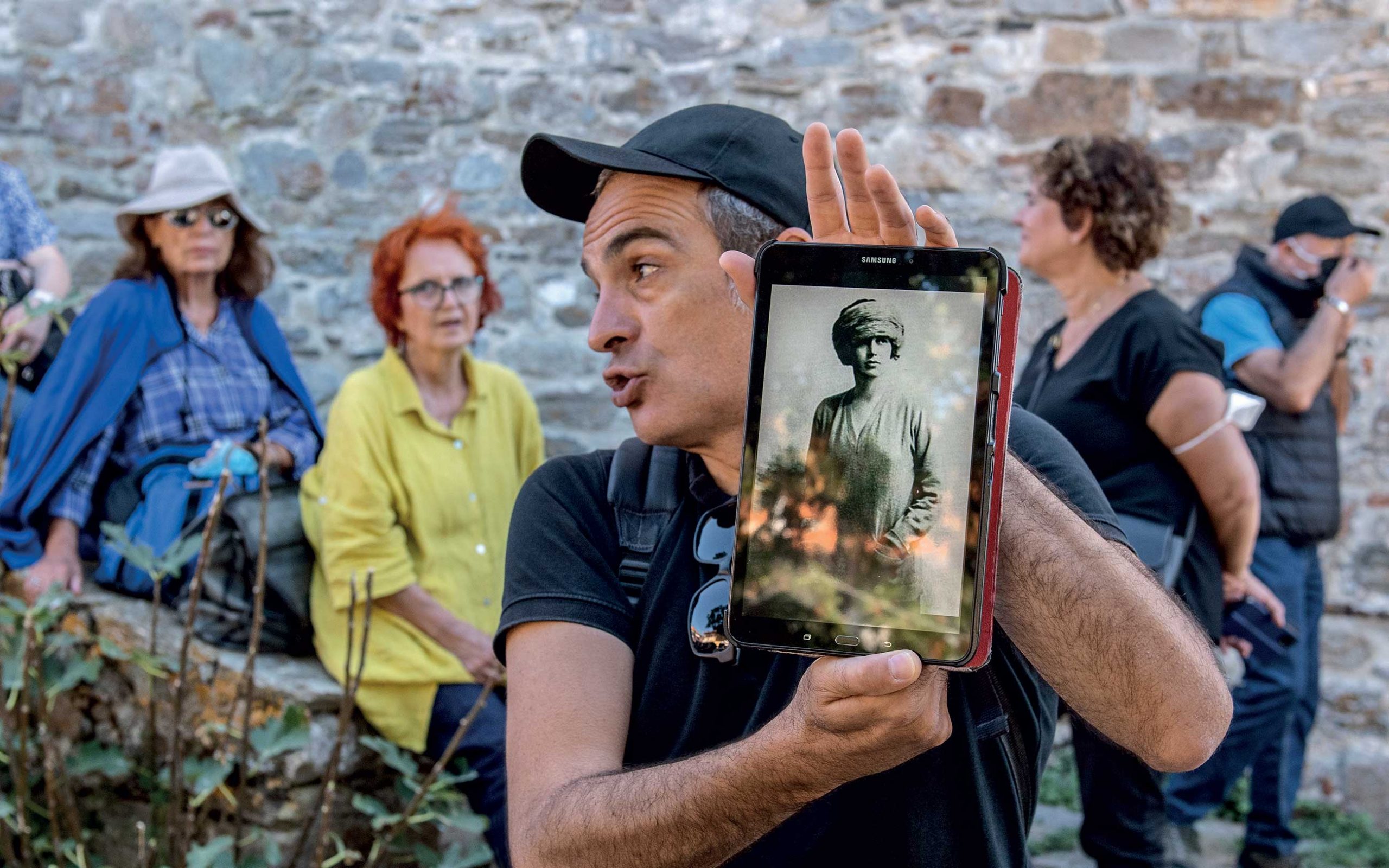
© Alexandros Avramidis
The ban has been transgressed on several occasions. Our guide describes an instance in 1821, following the failure of the Greek Revolution in Halkidiki, when women and children sought refuge in the monasteries to save themselves from certain slaughter.
However, this was not the reason Aliki Diplarakou came here in 1930. Pulling out an iPad, our guide shows us a black and white image of a beauty. Diplarakou, the daughter of a well-to-do family and winner of a Miss Europe beauty pageant, was vacationing on a yacht, sailing the sea in Ierissos. Upon hearing about the ban, she decided to breach it: she borrowed clothes from a sailor and entered Mt Athos disguised as a man. She then sought to become front-page news, bragging about her achievement.
Papadopoulos tell us about the urban legend that surfaced, claiming the young woman fell deeply ill soon after. They say this prompted her to write a public apology, pleading to the monk elders for forgiveness. The pardon came and Diplarakou died much later, in 2002, at the ripe age of 90.
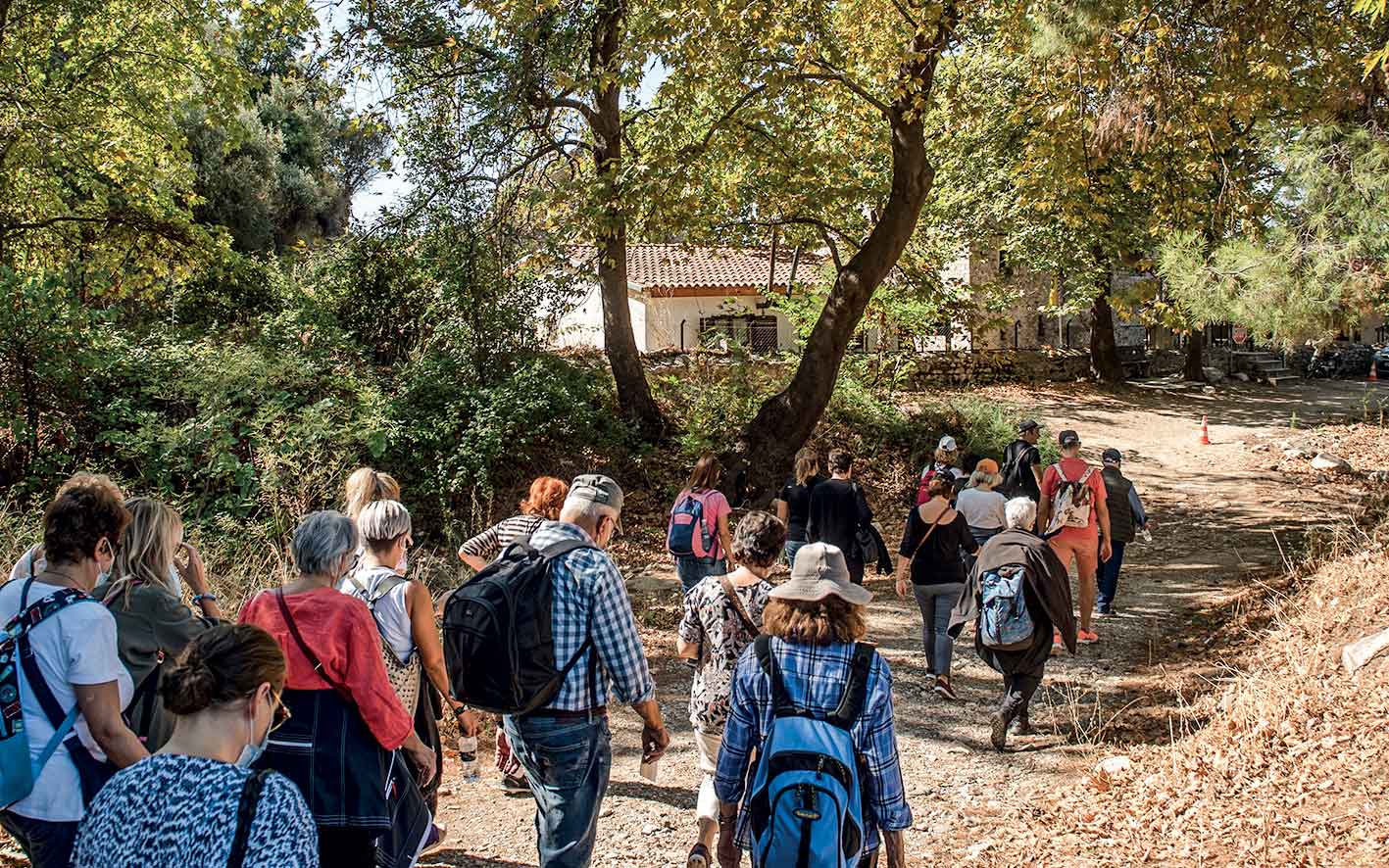
© Alexandros Avramidis
An Athonite monastery for all
Leaving the border of the Athonite state behind us, we walk along the dirt road under the shade of plane trees, and within minutes come across the remains of Zygou Monastery, an Athonite community dating from the 10th century. “This is the only monastery that once belonged to Agion Oros which women are permitted to visit,” our guide informs us. Zygou did not survive more than 250 years; its proximity to the sea rendered it vulnerable to pirate attacks. Listening to Papadopoulos’ vivid account and walking through the ruins, it’s easy to imagine the monk’s daily routine: the bread baking in the ovens, the meals shared in the dining hall, the wine they made and the hymns they sang during mass.
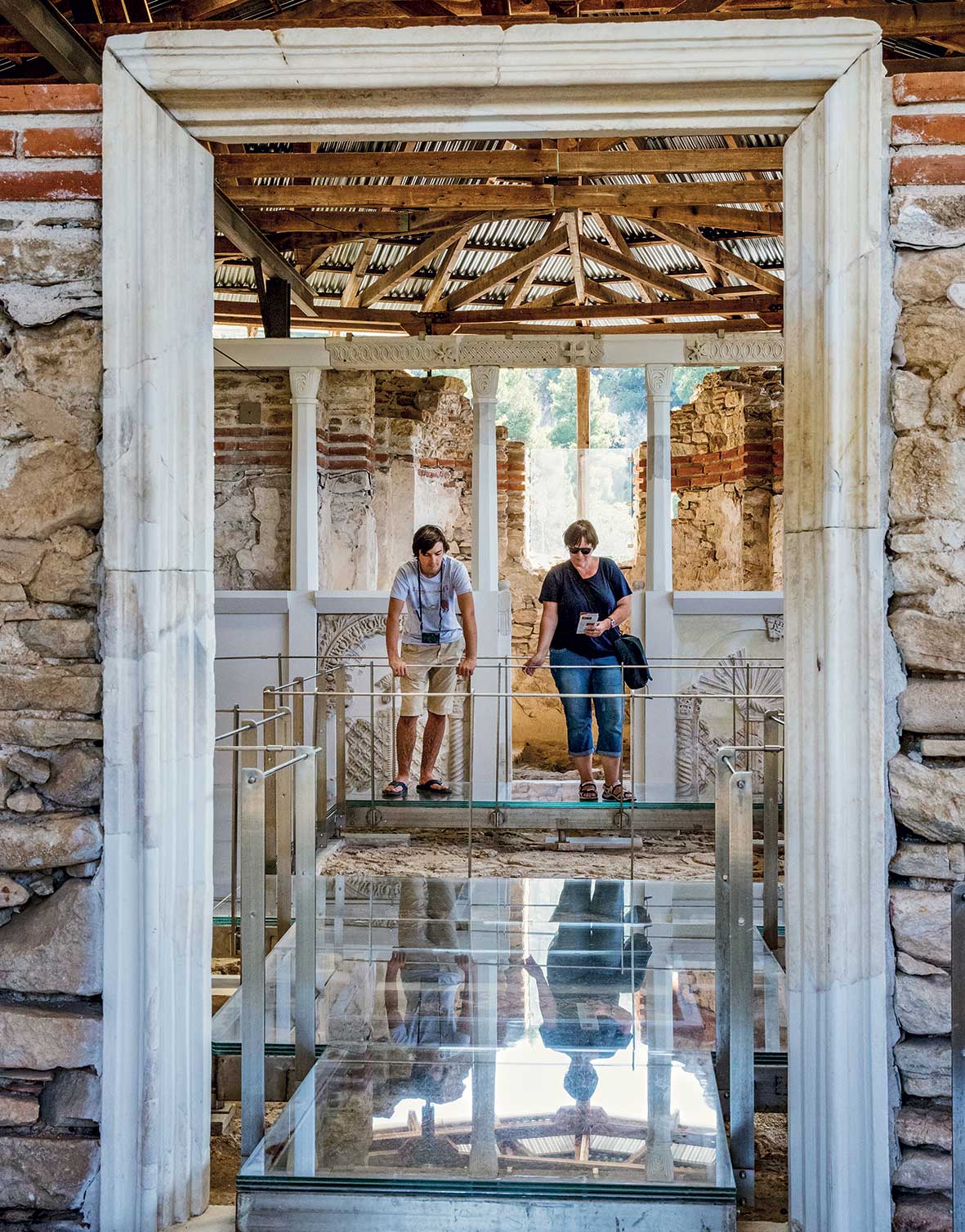
© Alexandros Avramidis
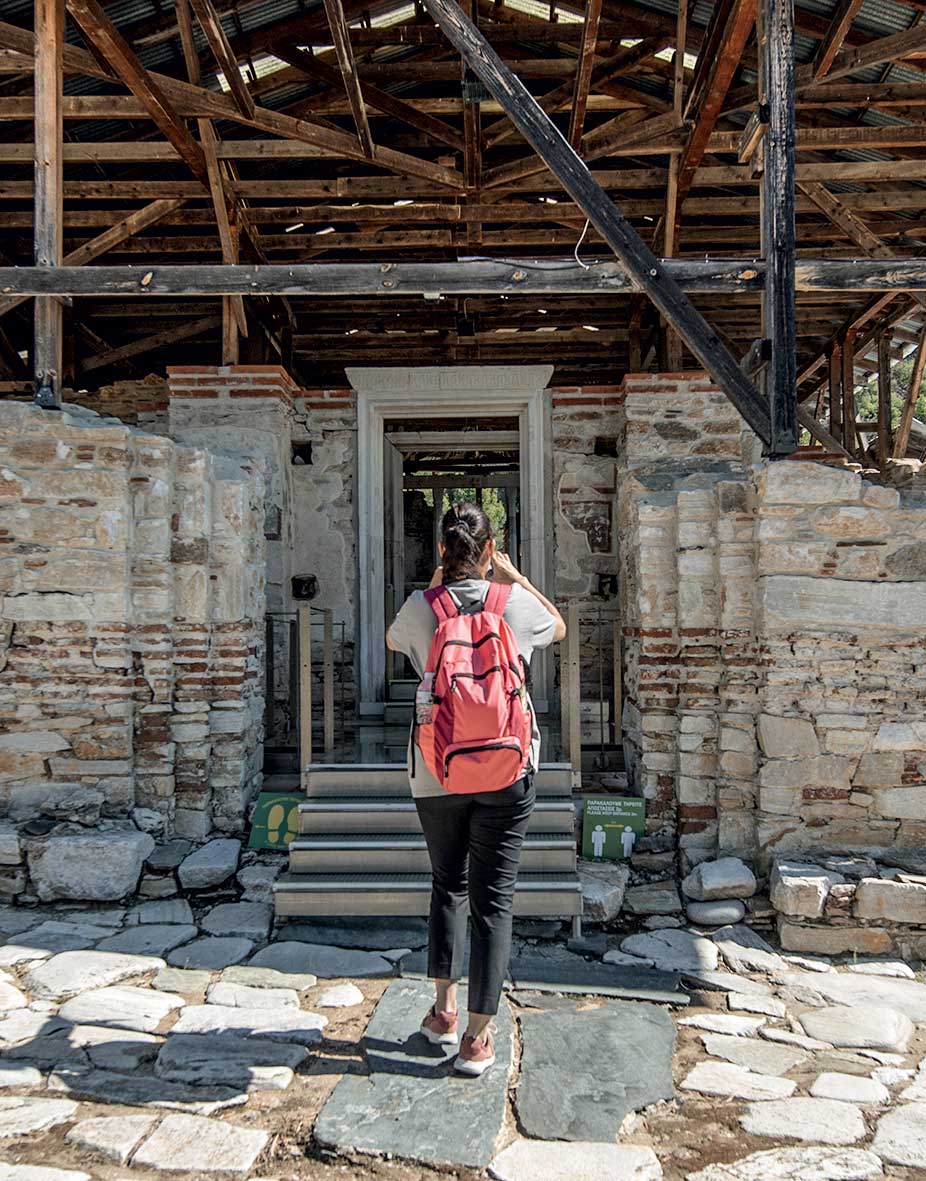
The tower of love
Pilgrims traveling into Mt Athos begin by taking the boat from the port of Ouranoupoli, the area’s tourist and administrative center. Following the coastal road connecting the Zygou Monastery and this port, we spot a stone-built Byzantine tower before us.
Exactly one century ago, at this very spot, Sydney and Joice Locke (from Scotland and Australia, respectively) arrived from Poland to assist the refugees from Asia Minor who’d fled persecution during World War I. The couple gave the ruins of the tower a new lease of life, and made it the springboard of their amazing life, which focused on love and service. In the tower, Joice set up a small trade and crafts industry, teaching young refugee girls to work the loom and make handcrafted rugs. The rugs they created were so ornate, they won many awards and helped the women earn their first income. The Lockes did not stop there, however. During World War II, putting their own life at risk, they participated in a rescue mission to save more than 1000 Jewish women and children from the Nazis.
We get a taste of their adventurous life as we climb the tower and look through the rooms. Photographs of the couple abound, but one object impresses me more: the old Remington typewriter on a wooden table facing the sea, on which the two humanitarians wrote their memoirs.
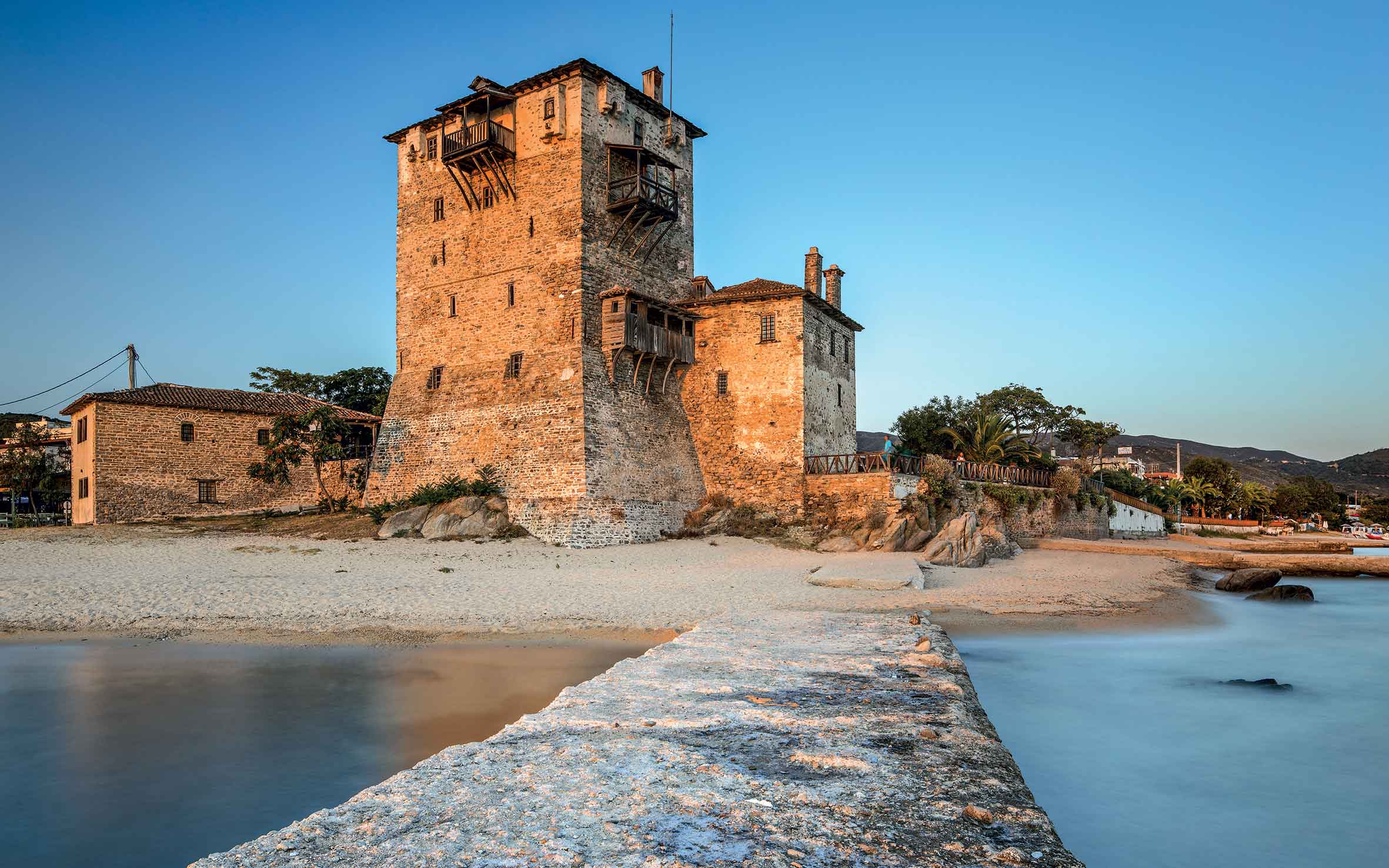
© Alexandros Avramidis
A holy place
We end up having a cold coffee in Ouranoupoli, in front of the beach, before setting off on our return. Our last stop is the hill, covered in olive trees, next to the ruins of the ancient city of Akanthos. The sea stretches out before us. Papadopoulos tells us that from here sailed the triremes of Xerxes in the 5th century BC; ships from the German navy did, too, during WWII, and were attacked by Greek resistance fighters hidden in nearby bays. With the ancient ruins behind us and facing the endless blue, our archaeologist lets us stand under the olive trees and contemplate the boundless history of this land and how many people it inspired and motivated. Perhaps this is what the worker who painted the sign above the wooden kiosk where we were resting was thinking, too. The sign reads: “Here, where you’ve come to admire this grandeur, is a holy place.”

